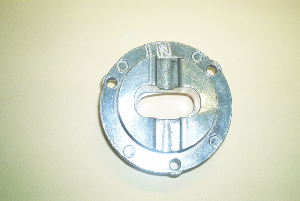Processing of Die Castings used for Airplane Parts. Die Castings used for airplane parts are increasingly demanded for the aircraft industry. This type of constructions need light weight for mobility. Moreover, it requires durability and resistances to several stresses while …
Continue reading
Tag Archives: aluminum parts
Popular Die Cast Alloys In Today’s Die Cast Industry
Popular Die Cast Alloys In Today’s Die Cast Industry. In past history, tin and lead were the preferred metals in the die casting procedure. These die casting alloys were utilized to mold many materials, but their use decreased in the early 1900’s when aluminum and zinc came into the scene. In the years that ensue, die casting alloys in the form of copper and magnesium became extensively utilized as soon as these metals became more available to the die casting industry.
Die casting has arrived far beyond the original procedure of utilizing low pressure injection techniques. Today, die casting alloys are forced into molds, or “dies”, via very high pressures that surpass 4000 lbs making parts like aluminum hardware. for every square inch. These die casting methods run from squeeze casting all the way to semi-solid casting. The contemporary die casting methods used today create quality metal products that exhibit superb integrity, and highly smooth surface finishes.
Currently, aluminum, copper and zinc are the alloys for die casting. Aluminum tops the list, although it is most often alloyed with highly-fluid silicon material to avert reduction and fracturing owing to high temperatures. Manufacturers also favor the use of copper due to the rigidity of the material, its non-corrosiveness, and its condensed ductility. On the other hand, die cast material created of zinc can be manufactured with thinner walls and molded to closer tolerances due to its fluidity and its ability to melt with no trouble in very high temperatures. When alloyed to aluminum, it fabricates greater strength and inflexibility to the completed die cast part.
Kinetic Die Casting is a california die casting companycalifornia die casting company that manufactures die cast parts. If you would like more information or request a quote, visit our website:Kinetic Die Casting Company
Aluminum Aircraft Parts Die Castings
Aircraft or better known as Airplanes are large, very large. They are large because they are designed to carry things, lots of things. Airplanes carry mail, gifts, shipments, food, packages, baggage, and people. Airplanes are the fastest transportation for “things” and people today. Airplanes are fast because they travel through the air. Because airplanes are big and travel through the air, the airplane construction materials need to lightweight and strong. Aluminum is used for most of the airplane components because it is lightweight and strong. The overall airplane part weight is kept down so the airplane will be able to carry more “things”. Therefore, aluminum is used a lot.

http://www.kineticdiecasting.com/aircraft_part_pictures.html
Aluminum Aircraft Part Pictures
https://www.kineticdiecasting.com/kdcgallery/201.01_1.png
Die casting is the preferred manufacturing process for making Aluminum Aircraft Parts. The reason is because the aluminum die casting process has a lot of advantages over other high volume aircraft part manufacturing processes.
-
Aluminum Aircraft Parts Produced as Die Castings:
- Die Casting is less expensive because more than 500 or 1,000 parts can be produced each day.
- Die Casting hold tolerance typically to +/- 0.002″ after the die casting tool is approved.
- Aluminum weighs 1/3 by volume of a similar part in steel.
- Aluminum die casting parts are very strong.
- Die Castings are produced near “net shape”, reducing additional manufacturing costs.
- Die Casting Tooling reliably manufacturers parts repeatably over several thousand parts.
- Aluminum die castings do not break down over time as other materials break down.
- Aluminum die castings have an aesthetically pleasing surface finish.
- Die Casting parts look good after paint or polish.
-
Kinetic Die Casting Company makes many types of aircraft parts. We make:
- Airplane distributor caps
- Aircraft wheel cove locks
- Cargo Plane bearing housing parts
- Airplane piston heads
- Many others….
Kinetic Die Casting manufactures die casting metal parts creating products like roofing tile molds, lighting parts, and military parts. If you would like more information about Kinetic Die Casting, visit our website:Kinetic Die Casting Company
A List of Alloys Used For Die Casting
A List of Alloys Used For Die Casting. The method of preparing metals that are found normally in the earth’s crust for appropriate use by man is through mining, removing, and finally joining these extracted metals into alloys. Most of the ordinary metals in use today are not actually in their pure form. They are as an alternative a combination of this and that metal. This practice of alloying offers us a new and improved version of the metals. Certain of these metals in the earth’s crust are suitable as die casting substance. Nonetheless, mixing them with other choice metals into a compound make them sturdier and more appropriate alloys for die casting.
A listing of die casting alloys would include magnesium, zinc, aluminum, lead and tin and copper alloys. Specialist in the die casting industry would be well versed in the personality characteristics of these alloys. Picking the correct metal alloy for a special purpose will spell the success of a product. Here is an general idea of each die casting alloy’s qualities and characteristics:
Copper alloys are corrosion resistant metals. They have high electrical conductivity and are utilized thus.
Kinetic Die Casting manufactures products like heatsink die casting, aluminum housings, and lighting fixtures. If you would like more information, please visit our website:Kinetic Die Casting Company
The Most Commonly Used Die Casting Alloys
The Most Commonly Used Die Casting Alloys. The power and usefulness of die casting really rely on the die casting alloys which were utilized in the procedure. Die casting has been known in the metalworking industry for coming up with the best statistics of mass produced items. These are utilized in different sectors like in customer, industrial and the commercial arena. You can discover aluminum parts such as automobile parts, connectors utilized in houses parts, silk faucet parts and on numerous toys.
Die casting is done when the melted metal is forced under high pressure into molds or dies that are created of reusable steel. This can come up with intricate shapes with outstanding degree of repeatability and precision. Such features will be determined by the categories of die casting alloys utilized to manufacture the products such as die cast speakers.
The most ordinary die casting alloys that are used for this intention include aluminum, zinc, copper, magnesium, lead and tin. There are also particular die casting alloys that are exploited in the procedure that include AA 380, ZAMAK, AA 386, AA 384, zinc aluminum, AA 390 and AZ91D magnesium. If the method will operate magnesium, aluminum, brass and zinc castings, the weight limit must not go beyond 44 lb for magnesium, 70 lb for aluminum, 10 lb for brass and 75 lb for zinc.
These are the key die casting alloys and a general idea on their rewards.
1. Zinc is recognized as the simplest to cast. It has high ductility and can naturally be plated.
2. Magnesium is the simplest to machine.
3. Aluminum has high thermal properties and conductive to electricity.
4. Copper is known for having the uppermost mechanical properties utilized in die cast.
5. Lead and tin have a close range dimensional accuracy and have high density.
Kinetic Die Casting manufactures custom metal parts to their customer. If you would like more information about Kinetic Die Casting, please visit our website:Kinetic Die Casting Company
Die Casting Alloys – Making Use of Zinc-Aluminum Agents
Die Casting Alloys – Making Use of Zinc-Aluminum Agents. The majority of today’s businesses consider that the aluminum die casting alloys are more reasonably priced and efficient to be designed and casted. The zinc-aluminum or ZA partnership succeeds to astonish each and every manufacturer mostly because of the mechanical properties which it holds. Die casting technology has in addition enhanced over the hundreds of years of its sustained use and it has been found out that the ZA alloys make the die casting technology more remarkable.
Usually, the ZA die casting alloys are sturdier, harder, and offers a better kind of creep resistance as compared to the typical zinc alloys obtainable. These characteristics are more than ever essential when the bearing properties are at stake.
The zinc-aluminum alloys are mostly utilized in die casting because of its ability to reduce a great deal of weight from the components. This means that the whole process can be done with all ease and the cost production is much more realistic. On the other hand, the aluminum die casting alloys with a fair amount of Fe are best utilized for the electrical circuits in aluminum die cast boxes. It has substituted the 1350 EC alloy since it has been often held to be the reason for overheating.
Even when surrendered to heat treatment, the ZAMAK alloys don’t create a negative change on its properties. Economically speaking, this type of material can do wonders on the budget management feature of each and every industry. Separate from its known strength, these materials are just so ideal in furnishing the industry with the most excellent final output.
Kinetic Die Casting can manufacture aluminum automobile parts, heat sinks, aerospace parts and much more. If you are looking for aluminum or zinc parts, visit our website Kinetic Die Casting Company


